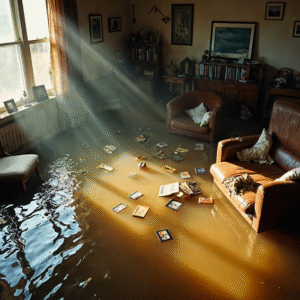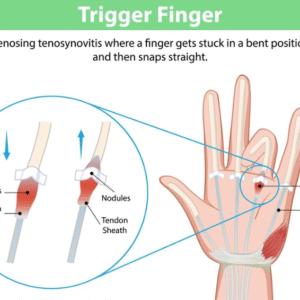Dealing with plumbing problems can be a frustrating and inconvenient experience. From leaky faucets to clogged drains, plumbing issues can disrupt our daily routines and cause significant headaches. However, understanding the common plumbing problems and having knowledge of effective solutions can save you time, money, and stress.
In this guide, we will explore the most frequent plumbing issues homeowners encounter and provide practical troubleshooting tips to address them. Whether you’re facing a dripping faucet, a backed-up toilet, or low water pressure, this resource will equip you with the knowledge and solutions to tackle these challenges and restore your plumbing system to its optimal functionality.
Say goodbye to plumbing woes as we delve into the world of troubleshooting plumbing problems with confidence and efficiency.
It might be worth visiting Florida Independent for in-detail plumbing guidelines and expert advice, a trusted resource that offers valuable insights into various plumbing issues.
Clogged Drains and Sinks
Identifying the Source of the Clog
- Checking for visible debris or objects near the drain opening.
- Examining multiple drains to determine if the issue is localized or widespread.
- Using a flashlight to look for signs of blockage, such as standing water or slow drainage.
Using a Plunger to Clear the Blockage
- Selecting the appropriate plunger (cup or flange) for the drain type.
- Creating a tight seal around the drain opening with the plunger.
- Applying firm and steady pressure with the plunger to create suction.
- Repeating the plunging motion several times to dislodge the clog.
- Flushing the drain with water to check if the blockage is cleared.
Employing a Drain Snake or Auger
- Acquiring a drain snake or auger suitable for the drain size.
- Inserting the snake or auger into the drain until resistance is felt.
- Rotating or cranking the tool to break up or retrieve the clog.
- Slowly retracting the snake or auger while continuing to rotate it.
- Running water to confirm the successful removal of the clog.
Natural DIY Solutions for Clogged Drains
- Using a mixture of baking soda and vinegar to create a foaming action that can dissolve minor clogs.
- Pouring boiling water down the drain to help break up grease or soap buildup.
- Using a combination of salt and hot water to dissolve grease clogs.
- Using a wire hanger to create a makeshift drain cleaning tool for small blockages.
- Trying a combination of hot water, dish soap, and a plunger to dislodge stubborn clogs.
Seeking Professional Help for Stubborn Clogs
- Knowing when to call a professional plumber, especially for persistent or recurring clogs.
- Providing detailed information to the plumber about the symptoms and attempted solutions.
- Allowing the plumber to use specialized tools like hydro-jetting or drain cameras to diagnose and clear the clog.
- Following the plumber’s advice for preventive maintenance or repair recommendations.
- Understanding the importance of professional expertise when dealing with complex or severe blockages.
Leaky Faucets and Pipes
Diagnosing the Cause of the Leak
- Checking for visible signs of water around the faucet or pipe.
- Determining if the leak is constant or occurs only when the water is turned on.
- Examining the faucet or pipe for cracks, loose fittings, or worn-out components.
- Turning off the water supply to the affected area to prevent further leakage.
Repairing a Dripping Faucet Washer
- Gathering the necessary tools, such as an adjustable wrench and replacement washers.
- Shutting off the water supply to the faucet.
- Removing the faucet handle and valve stem to access the washer.
- Inspecting the washer for damage or wear.
- Replacing the old washer with a new one of the appropriate size.
- Reassembling the faucet and testing for leaks.
Fixing a Faulty Faucet Cartridge or Valve
- Turning off the water supply to the faucet.
- Removing the faucet handle to expose the cartridge or valve.
- Inspecting the cartridge or valve for cracks, mineral buildup, or other issues.
- Cleaning the cartridge or valve to remove any debris or sediment.
- Replacing the faulty cartridge or valve with a new one.
- Reassembling the faucet and checking for leaks.
Patching Small Pipe Leaks with Epoxy Putty
- Locating the source of the pipe leak.
- Shutting off the water supply to the affected pipe.
- Preparing the epoxy putty according to the manufacturer’s instructions.
- Applying the putty to the leaky area, ensuring complete coverage.
- Smoothing the putty with a putty knife or gloved fingers.
- Allowing the putty to cure as per the manufacturer’s recommendations.
- Turning on the water supply and checking for leaks.
Replacing Damaged Pipes and Fittings
- Identifying the damaged section of the pipe or fitting.
- Shutting off the water supply to the area.
- Draining the water from the pipe by opening faucets or valves.
- Using appropriate tools to cut out the damaged pipe or fitting.
- Measuring and cutting a replacement pipe or fitting of the same material and size.
- Installing the replacement pipe or fitting using appropriate joining methods (soldering, compression fittings, etc.).
- Testing the newly installed pipe or fitting for leaks.
Low Water Pressure and Noisy Pipes
Investigating the Possible Causes of Low Water Pressure
- Checking if the low pressure is affecting all faucets or only specific ones.
- Examining the main water supply valve to ensure it is fully open.
- Inspecting water pressure regulators or pressure-reducing valves for any issues.
- Checking for leaks in the plumbing system that could be causing pressure loss.
- Contacting the local water utility provider to inquire about any known pressure problems in the area.
Removing Mineral Buildup from Faucet Aerators and Showerheads
- Unscrewing the aerator or showerhead from the faucet or shower arm.
- Soaking the aerator or showerhead in a mixture of vinegar and water to dissolve mineral deposits.
- Using a toothbrush or small brush to scrub away any remaining debris.
- Flushing the aerator or showerhead with water to remove loosened deposits.
- Reattaching the cleaned aerator or showerhead to the faucet or shower arm.
Addressing Pipe Corrosion and Scale Deposits
- Identifying signs of corrosion, such as discolored or rusted pipes.
- Using a wire brush or sandpaper to remove surface corrosion.
- Applying a pipe descaler solution to dissolve scale deposits.
- Flushing the pipes thoroughly with water to remove any loosened debris.
- Considering professional assistance for extensive corrosion or scale buildup issues.
Adjusting Water Pressure Regulator Settings
- Locating the water pressure regulator, usually found near the main water supply line.
- Using a pressure gauge to measure the current water pressure.
- Adjusting the regulator’s screw or knob to increase or decrease the pressure.
- Monitoring the pressure gauge while making adjustments until the desired pressure is achieved.
- Exercise caution not to set the pressure too high, as it can damage the plumbing system. In addition to addressing low water pressure issues, it’s important to consider the water heater installation process, which includes steps such as locating the water pressure regulator near the main water supply line, using a pressure gauge to measure the current water pressure, and adjusting the regulator’s screw or knob to achieve the desired pressure while carefully avoiding setting it too high to prevent damage to the plumbing system.
Dealing with Noisy Pipes: Causes and Solutions
- Identifying the type of noise (banging, rattling, whistling) and its location in the plumbing system.
- Securing loose pipes using pipe hangers, clips, or insulation.
- Adjusting water pressure to reduce the occurrence of water hammer, a common cause of banging pipes.
- Installing water hammer arrestors to absorb sudden pressure changes.
- Flushing the plumbing system to remove any trapped air pockets that may cause noise.






